Gardening 101: How to Start a Flower Garden
Flower gardens are a great way to turn your yard into a relaxing and beautiful retreat. And creating them is not as hard as you might think. This guide leads you through everything you need to know to start a flower garden in your own backyard, even if you're a beginner gardener.

While I love growing herbs and vegetables, I have to admit that flowers hold a special place in my heart.
Whether it’s in a bouquet or a wildflower growing next to a pathway, I always stop for a moment to appreciate their beauty.
Many homeowners have a nice lawn, but want something that will add more color and interest to their yard.
And that's where flower gardens shine! They're also a great home improvement for adding curb appeal.
If this is you and you're not sure where to start, these steps will help you create a beautiful new garden that will last for many blooming seasons to come, even if you're a beginner.

1 | Draw a plan
Start by drawing the layout of your existing yard.
Draw any existing trees, shrubs, pathways, patios, boulders, and anything else that may be in the area. If possible, draw it to scale.
This is very beneficial in determining the size and location of your new flower bed.
2 | Select your site
Then you can decide where the best placement for your flower bed will be.
Consider these factors:
- How much light shines throughout the day? Does it get full sun or is it mostly shady?
- Can you water the area easily?
- Will the water drain well from the area or pool instead?
- Is it sheltered from harsh weather conditions such as wind?
- Will it be in the way of any activities or footpaths?
- Are there any underground utility lines?
If you have your heart set on growing specific flowers (such as roses, daisies or lilacs), you'll need to select a location that matches their light requirements. (All of the mentioned plants require at least 6 hours of sunlight per day so keep that in mind when making your decision).
Once you have your area selected, try to envision the shape of your future flower garden.
3 | Create a flower garden design
Now that you’ve determined the area and general size of your flower garden, you can go outside and physically map it out.
One of my favorite tricks is to outline with a garden hose to get a natural shape and play around with placement.
Remember, it doesn’t have to be square or rectangle! Unless you are planting a formal garden, rounded shapes look more natural.
You may also want to choose a garden style (such as a cottage garden or formal garden) which will help you choose plant and other design elements.
Find more tips on planning the perfect garden HERE.
4 | Determine your soil conditions
The most important part of a successful flower garden is the soil.
So you'll need to know what you're starting with in order to figure out what changes you might need to make.
If your yard is like mine, the soil will be solid clay. Which contains lots of nutrients but doesn't release them easily to plants and is either waterlogged or totally dry.
On the other hard, your soil could be like my mother's yard which is almost 100% sand. So it's hard to keep things watered and nutrients run out of it really quickly.
Or If you're lucky, you will have something in the middle, which doesn't require as many amendments to make it workable.
You will also want to do a soil test so you know what your soil pH is. This will help you determine the types of plants that will naturally grow well, and which ones will need supplements in order to thrive.
5 | Dig the flower bed(s)
Now you're ready to start doing some work!
In most cases, you will need to mix in soil amendments such as top soil, compost and peat moss to make things easier to grow.
This will ensure your flower garden has tons of organic matter to draw nutrients from for big, beautiful blooms.
While you can amend the soil when you are planting each individual plant, I find that it works better in the long term to dig up the entire area where you want your flower bed to be.
For the best results, you'll want to dig down at least 12 inches.
Then add the amendments over the whole area and mix them in with a pitch fork.
It's a lot of work up front, but it will save you a lot of time when you get to planting (and the plants will grow better).
6 | Install flower garden edging

When you have dug and amended flower beds this way, they usually end up being higher than the ground around them.
Which means the dirt tends to wash away when it rains.
Not only does it look messy, but it also erodes soil from your flower garden.
Installing garden edging not only makes your garden look pretty and put together, but also helps to keep the soil in place.
7 | Know Your Zone
You're almost ready to start the fun stuff…picking out plants!
But first, you'll need to know your gardening zone.
It is based on how cold your winters are, how hot your summers are, how long the growing season is and what the first and last frost dates are for your area.
This determines what kinds of plants will survive in your garden.
And all perennial plants, shrubs and trees have a zone range assigned to them (look for it on the tag). You'll want to make sure that your garden zone falls within that range.
8 | Pick Out Your perennial Garden Plants
Finally, it's time to choose the plants for your garden!
Just like how you don’t go to the grocery store hungry, you shouldn’t go to the garden center without a plan.
While it is so much fun to go wild and pick all the pretty flower garden plants you lay eyes on, having a general plan in place beforehand will help keep your garden and budget on track.
Trees and Shrubs
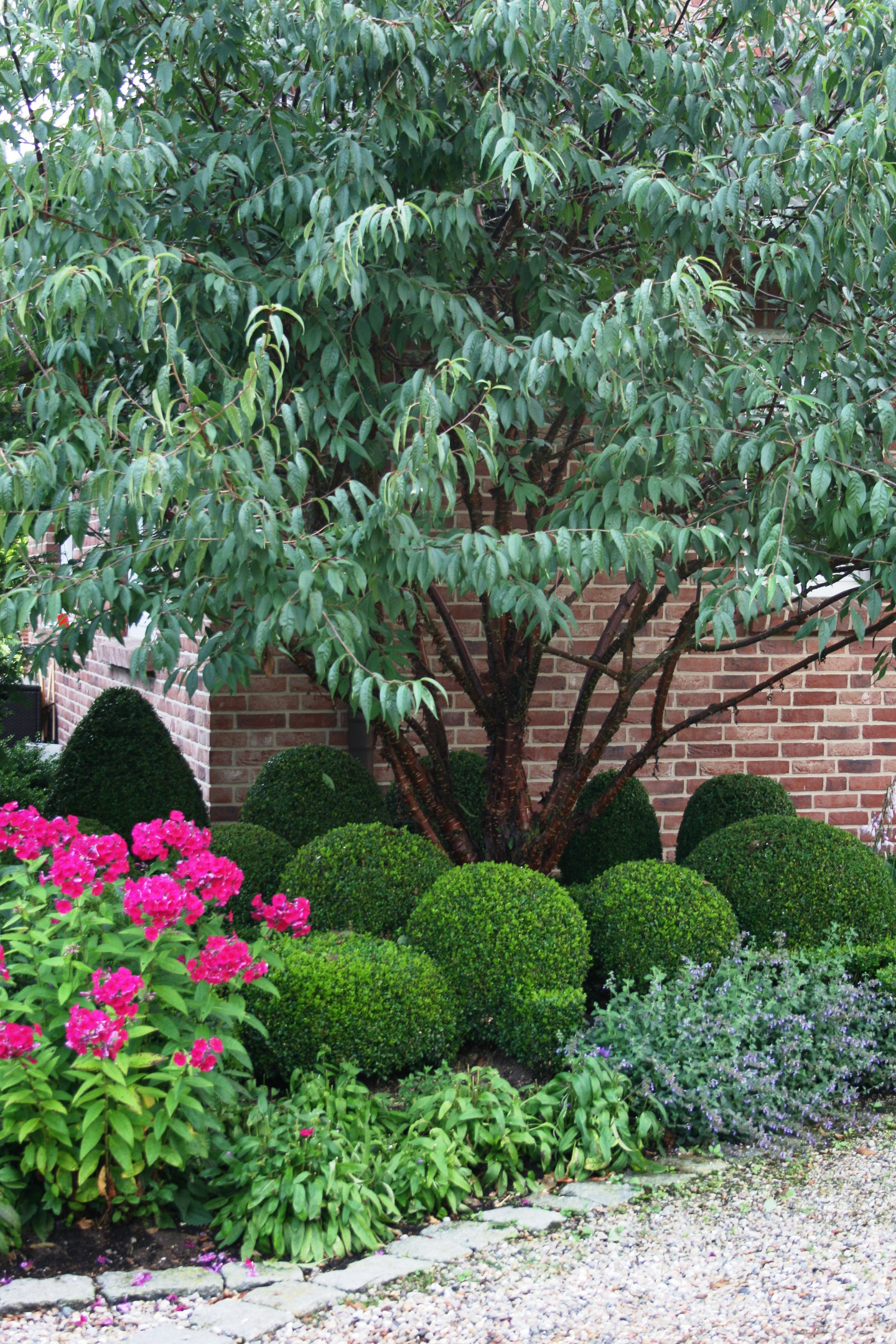
First, pick out the backbone of your garden beds which are small trees and shrubs.
They will help to add some structure and height to your garden.
I always try to incorporate some evergreens so that this “backbone” looks good all year round.
Find some tree and shrub ideas HERE.
Perennials

After the shrubs come the perennials.
These are plants which come come back year after year, but often go dormant during the winter and don't have a branch structure like bushes and trees.
However, they do come in many shapes, sizes, textures and flower colors so they provide lots of interest during the growing season.
And while they may cost more than annuals in their first year, perennial flowers save you money (and effort) in the long run since you only have to buy and plant them once.
In case you're not sure where to get all of the shrubs and perennials you want, here are my favorite online nurseries to purchase your plants.
Annuals
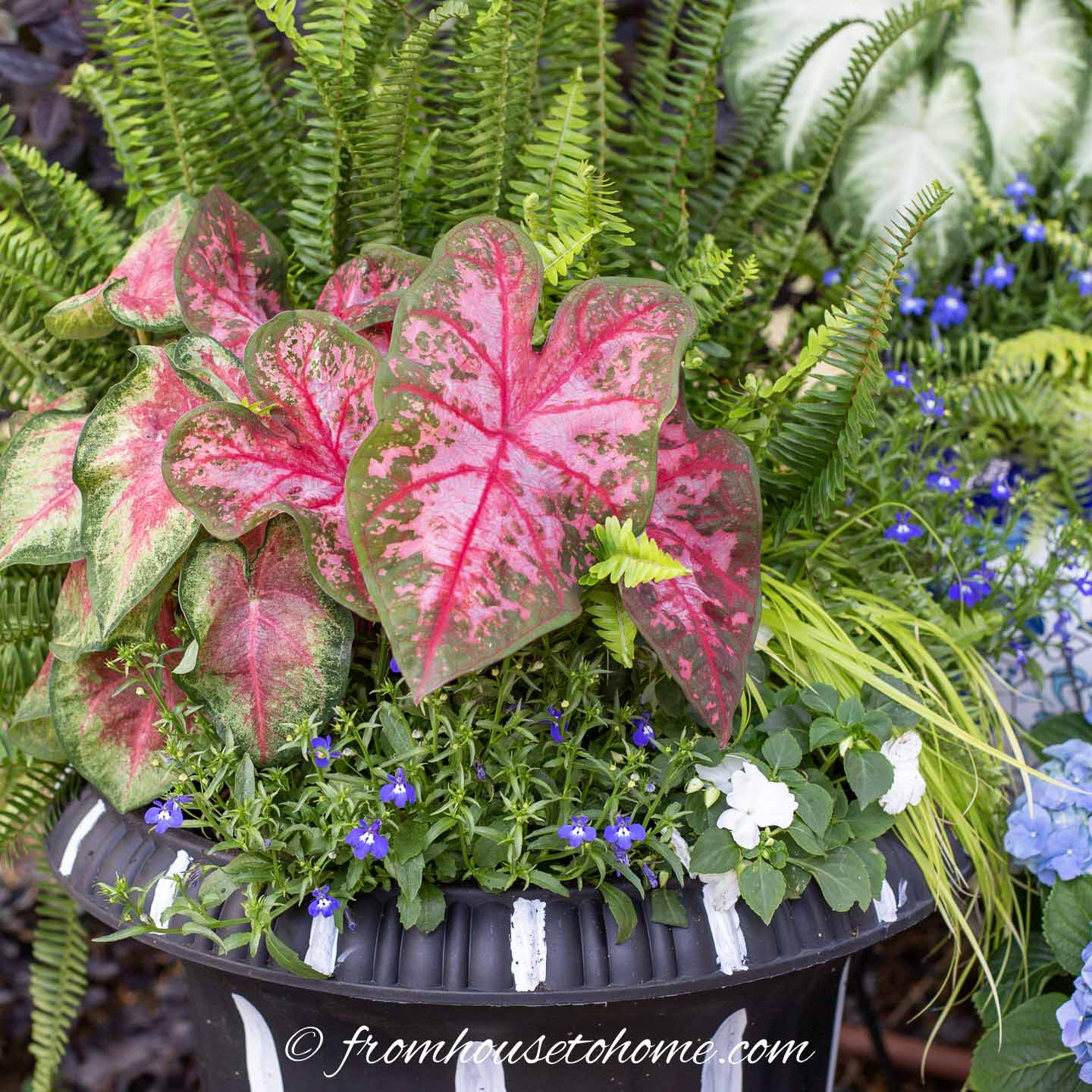
Your first trip to the garden center, you grabbed your shrubs and perennials.
Once you have them planted, fill in all the gaps with annuals.
Annual flowers usually bloom all summer, but will die off over the winter so you will need to be buy and plant new ones every year.
Once again, look for variety for your annuals. Choose different heights, shapes, and colors. Choose tiny blooms, big blooms, and clusters. You get the idea!
Before I plant any of my annuals, I lay all of them out first in their pots.
Once it all looks good, I plant then one by one where I placed the pot.
Find more tips for picking the right plants.
Start with the tallest, largest plants and place them in the back of your garden bed (or the middle if you can walk all the way around it).
Next, begin to fill in the spaces between and under the tall plants to create layers, working your way forward in height. Generally, shorter plants go at the front and taller ones at the back. That way, all the flowers will get seen and none of them will overshadow others as they grow.
However, you don't want it to look too “planned” so avoid planting in lines and try to have some variation of heights.
Also, be sure to pay attention to the final size listed on the plant label and space them out accordingly. Otherwise, you'll be moving them to a new location in a couple of years when everything is too crowded.
9 | Plan for every season

Yes, summer may have most of the fun when it comes to flowers, but there can be a little bit of garden magic all year round. So try to choose plants with different blooming times.
Some plants, such as witch hazel or camellia, actually look their best during the colder months. Plant them now and you’ll be happy come the dreary, cold weather.
On the other side, you can also plant bulbs in the fall to enjoy in the spring. Spotting one of your emerging spring bulbs is an amazing feeling for the beginner flower gardener.
Get some inspiration from this four-season garden.
10 | Set Up an Automated Watering System
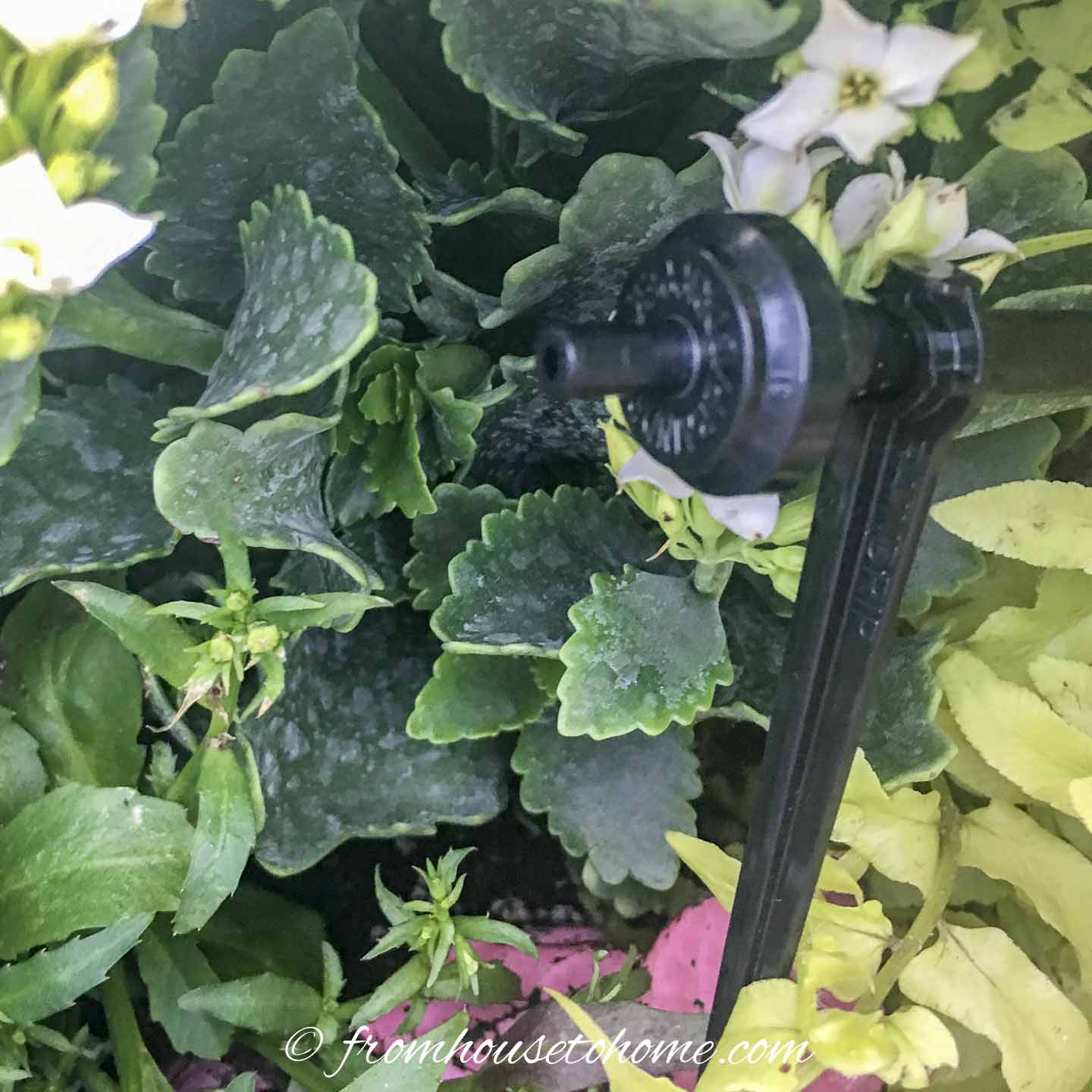
Setting up an automated watering system is the easiest way to ensure your plants are getting enough water regularly.
Plus, when you head out on vacation, you can come home knowing your flower garden will be standing tall to greet you. This can be one of the most vital steps for starting a flower garden.
Drip irrigation is the best option for this. It is inexpensive, fairly easy to set up and it doesn't spray water onto the plant foliage (which can cause fungus and diseases to spread).
Combined with an automatic timer, you will never forget to water your flower garden ever again.
Purchasing an outdoor watering kit is the easiest way to go.
Included in it are water emitters to drip the water into the plants, some drip hose, stakes, tee connectors, and a hose adapter. You may want to include a water timer and water pressure regulator, as well as additional water emitters, drip hose, and tee connectors depending on the size of your garden.
For a step-by-step tutorial, follow my instructions on how to set up an automated watering system.
11 | Mulch your flower bed
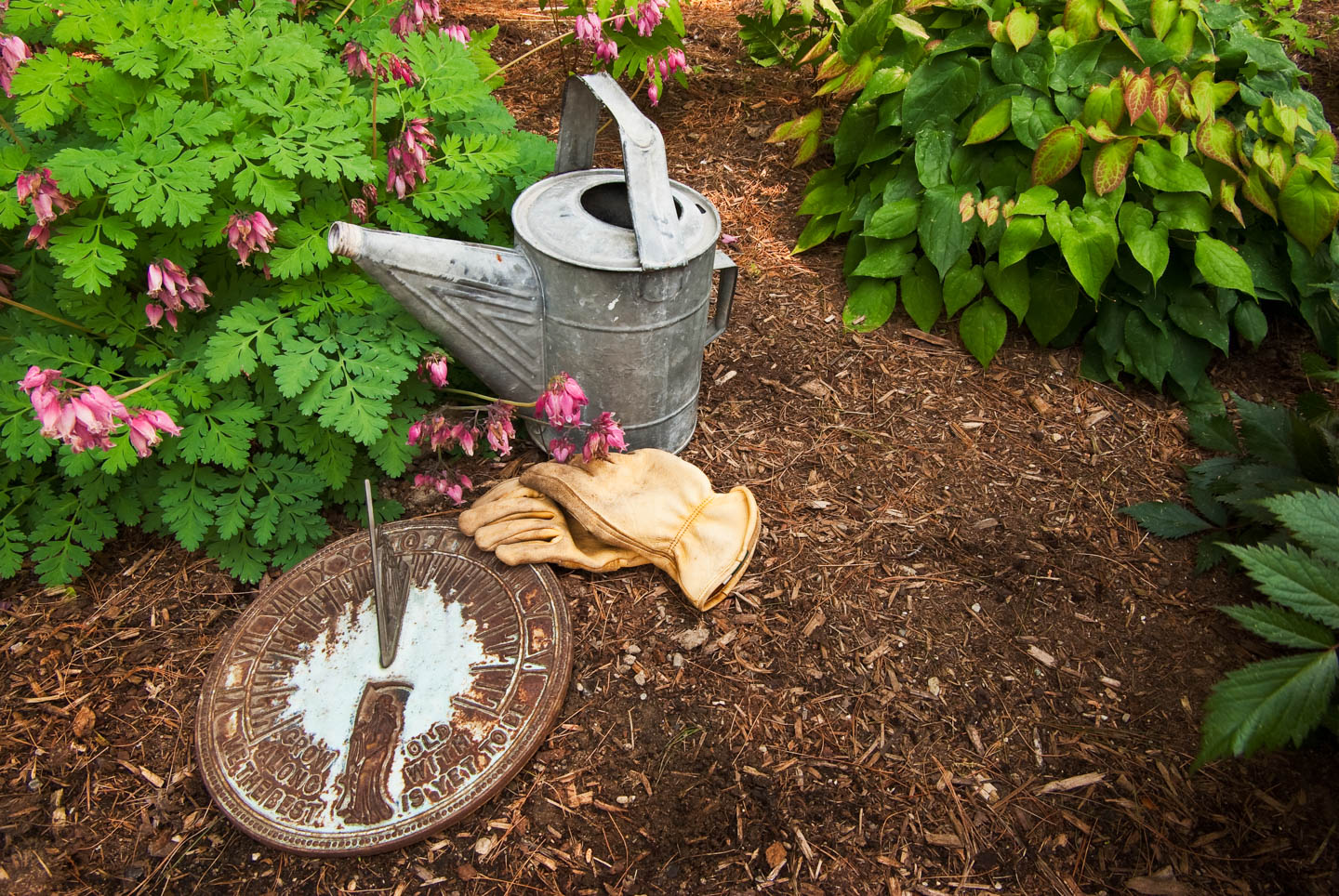
Mulch helps to control weeds, keep moisture in, insulate plants from cold weather, add nutrients to the soil, and adds a visual appeal when you’re looking for something other than dirt to line your flower bed with.
Mulching in the spring will bring you the most benefits.
Place small mounds of the mulch in your bed. Do not place large heaps of mulch in one area as it will make it more difficult to evenly disperse and will result in too much mulch in certain areas.
Use your hands or a rake to smooth out the mulch anywhere from 2-4 inches tall.
When mulching, always ensure there is a 3″ to 4″ space around tree trunks and the stems of perennials and shrubs.
This prevents moisture build-up which can cause the plant to rot or diseases and fungus to spread.
Refresh your mulch annually to keep your flower bed fresh. Over time, it will fade and decompose and will need to be replaced.
I like to use ground hardwood bark that has not been dyed because it returns nutrients to the soil as it decomposes, without unnatural chemicals.
12 | Fertilize Your Flowers

To produce colorful and healthy-looking flowers, your soil will need some extra nutrients.
Fertilizer helps to provide nitrogen, phosphorus, and potassium. These nutrients help to maintain a healthy plant and not all soil will have a good mix of each.
While each plant enjoys their own specific mix of fertilizer, most gardens can get away with a balanced blend.
Look for a fertilizer label with 10-10-10 on it, indicating there are even amounts of nitrogen, phosphorus, and potassium.
However, to encourage more flower blooms, you can find a flowering specific fertilizer which will contain more phosphorus (the second number).
Liquid vs Granular Fertilizer
You can find fertilizer in both granular and liquid form.
Granular fertilizers slowly release the fertilizer and should be used once a year in the spring or when you are first planting.
Liquid fertilizer can be applied more regularly during the growing season.
When to Fertilize Your Flower Garden
Begin fertilizing in the late spring at half the strength of the liquid fertilizer. Slowly ramp up to full strength for the summer.
Continue to fertilize once a week or monthly depending on the plant.
Once it begins to cool in fall, gradually wean your flowers off of the fertilizer. In the winter, the plants are dormant and won’t need any.
And there you have it!
By following these steps, your flower garden will return in the spring and be more beautiful than ever.
Other Gardening Ideas You Might Like
- How to organize your garden tools
- The best gardening apps every gardener needs to know
- How to create a low maintenance garden
Have comments or question on how to start a flower garden? Tell us in the section below.
Pin It So You Don't Forget It!

This post was originally published on March 7, 2021 but was updated with new content on November 25, 2024.






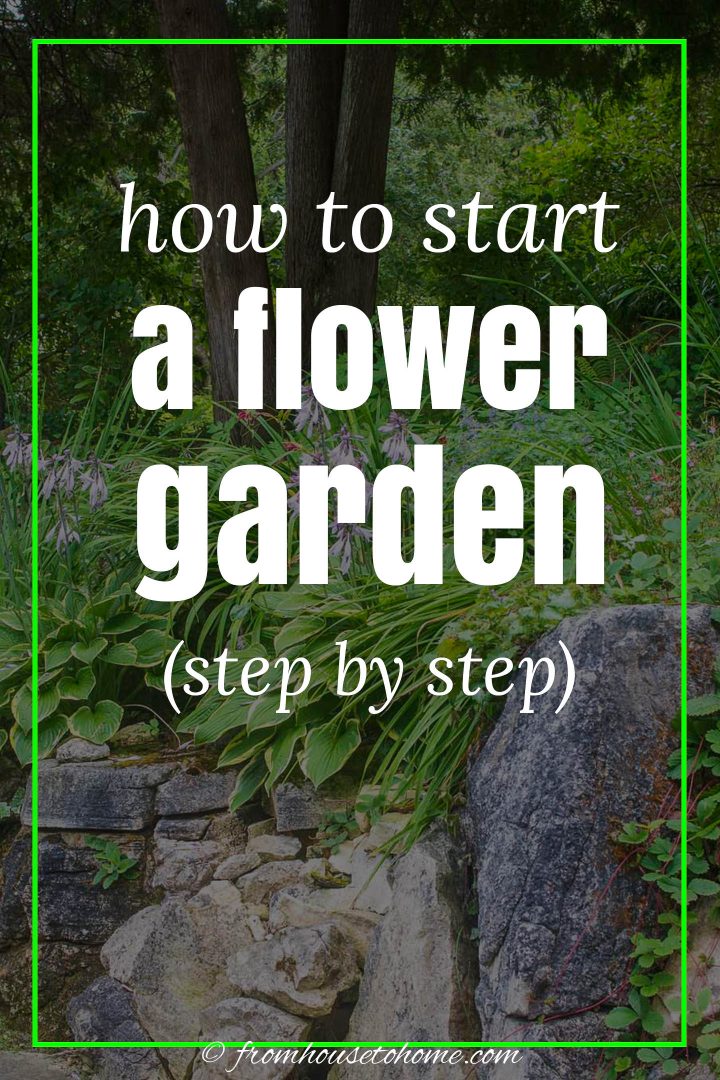
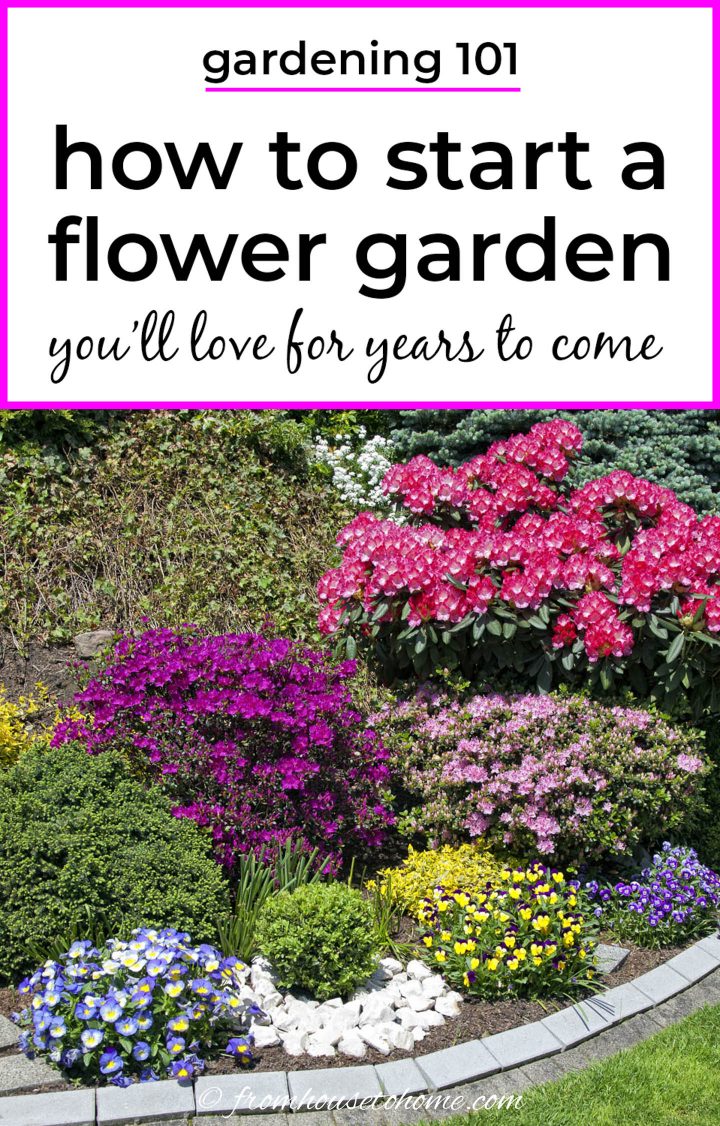










I have quite a few areas that are under trees/very shady. Is there a short grassy, lily type bulb that will naturalize to fill in these areas between rhodies, azaleas and hydrangeas?
Hi Val…sorry for the late reply. I somehow missed your question. These aren’t really lily type bulbs, but will naturalize and grow in the shade: You can try Snowdrops, Scilla, Chinodoxa, Leucojum or Lily of the Valley. (Many of them will go dormant in the summer so that may not be what you want). Liriope is another option. It isn’t a bulb but is grassy and will grow in those conditions.